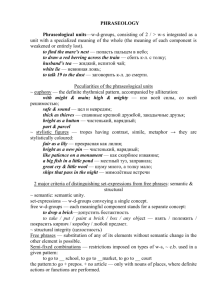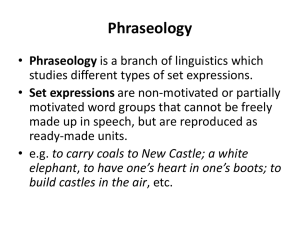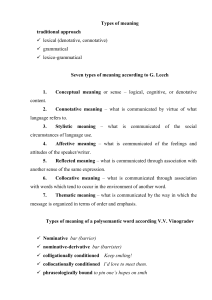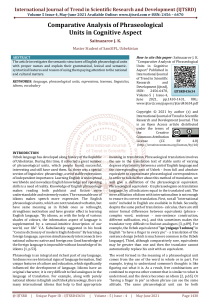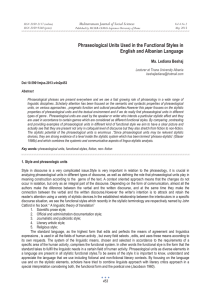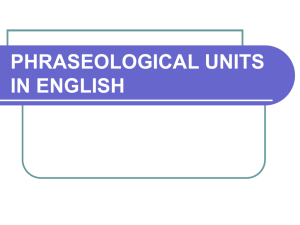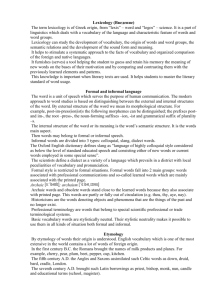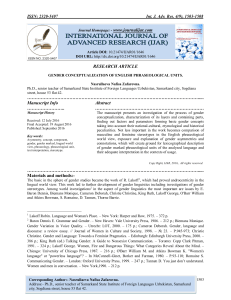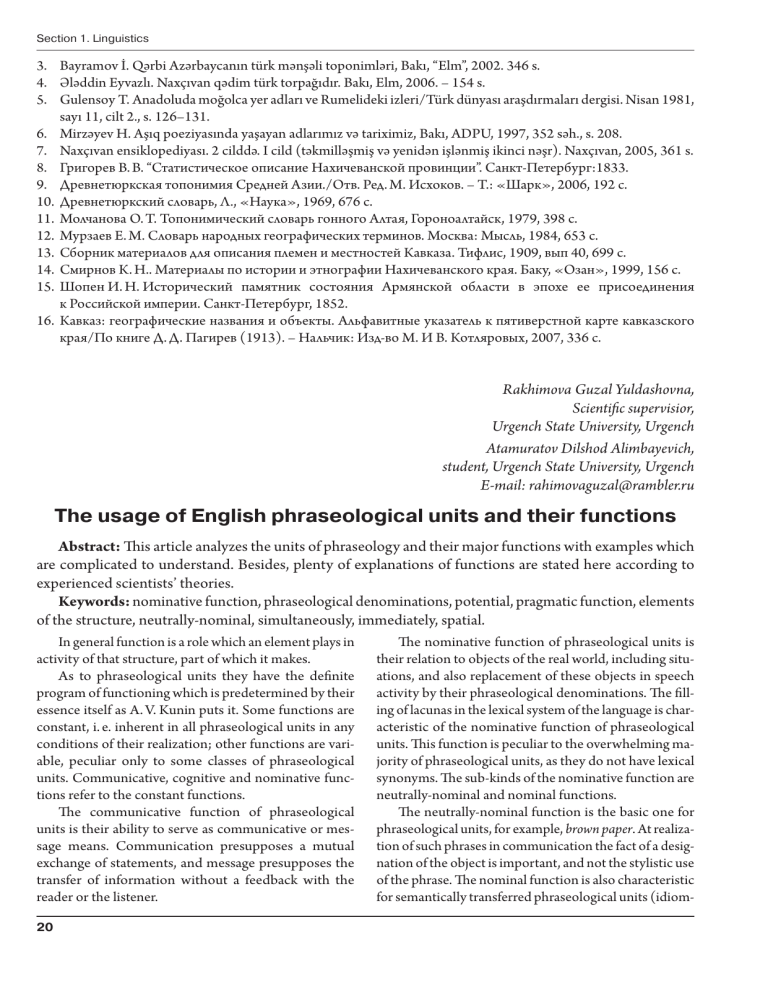
Section 1. Linguistics 3. Bayramov İ. Qərbi Azərbaycanın türk mənşəli toponimləri, Bakı, “Elm”, 2002. 346 s. 4. Ələddin Eyvazlı. Naxçıvan qədim türk torpağıdır. Bakı, Elm, 2006. – 154 s. 5. Gulensoy T. Anadoluda moğolca yer adları ve Rumelideki izleri/Türk dünyası araşdırmaları dergisi. Nisan 1981, sayı 11, cilt 2., s. 126–131. 6. Mirzəyev H. Aşıq poeziyasında yaşayan adlarımız və tariximiz, Bakı, ADPU, 1997, 352 səh., s. 208. 7. Naxçıvan ensiklopediyası. 2 cilddə. I cild (təkmilləşmiş və yenidən işlənmiş ikinci nəşr). Naxçıvan, 2005, 361 s. 8. Григорев В. В. “Статистическое описание Нахичеванской провинции”. Санкт-Петербург:1833. 9. Древнетюркская топонимия Средней Азии./Отв. Ред. М. Исхоков. – Т.: «Шарк», 2006, 192 с. 10. Древнетюркский словарь, Л., «Наука», 1969, 676 с. 11. Молчанова O. Т. Топонимический словарь гонного Алтая, Гороноалтайск, 1979, 398 с. 12. Мурзаев Е. М. Словарь народных географических терминов. Москва: Мысль, 1984, 653 с. 13. Сборник материалов для описания племен и местностей Кавказа. Тифлис, 1909, вып 40, 699 с. 14. Смирнов К. Н.. Материалы по истории и этнографии Нахичеванского края. Баку, «Озан», 1999, 156 с. 15. Шопен И. Н. Исторический памятник состояния Армянской области в эпохе ее присоединения к Российской империи. Санкт-Петербург, 1852. 16. Кавказ: географические названия и объекты. Альфавитные указатель к пятиверстной карте кавказского края/По книге Д. Д. Пагирев (1913). – Нальчик: Изд-во М. И В. Котляровых, 2007, 336 с. Rakhimova Guzal Yuldashovna, Scientific supervisior, Urgench State University, Urgench Atamuratov Dilshod Alimbayevich, student, Urgench State University, Urgench E‑mail: rahimovaguzal@rambler.ru The usage of English phraseological units and their functions Abstract: This article analyzes the units of phraseology and their major functions with examples which are complicated to understand. Besides, plenty of explanations of functions are stated here according to experienced scientists’ theories. Keywords: nominative function, phraseological denominations, potential, pragmatic function, elements of the structure, neutrally-nominal, simultaneously, immediately, ­spatial. In general function is a role which an element plays in activity of that structure, part of which it makes. As to phraseological units they have the definite program of functioning which is predetermined by their essence itself as A. V. Kunin puts it. Some functions are constant, i. e. inherent in all phraseological units in any conditions of their realization; other functions are variable, peculiar only to some classes of phraseological units. Communicative, cognitive and nominative functions refer to the constant functions. The communicative function of phraseological units is their ability to serve as communicative or message means. Communication presupposes a mutual exchange of statements, and message presupposes the transfer of information without a feedback with the reader or the l­ istener. 20 The nominative function of phraseological units is their relation to objects of the real world, including situations, and also replacement of these objects in speech activity by their phraseological denominations. The filling of lacunas in the lexical system of the language is characteristic of the nominative function of phraseological units. This function is peculiar to the overwhelming majority of phraseological units, as they do not have lexical synonyms. The sub-kinds of the nominative function are neutrally-nominal and nominal functions. The neutrally-nominal function is the basic one for phraseological units, for example, brown paper. At realization of such phrases in communication the fact of a designation of the object is important, and not the stylistic use of the phrase. The nominal function is also characteristic for semantically transferred p­ hraseological units (idiom- The usage of English phraseological units and their functions atisms and idiophraseomatisms), but it is not neutral, it is stylistically marked. Function which is closely connected with nominative function is the cognitive function, that is the sociallydetermined reflexion of objects of the real world mediated by consciousness, promoting their cognition. The social determinacy is shown in the fact that though potential phraseological units are created by separate individuals, these individuals are part of the society, and the realization of the cognitive function by them is possible only on the basis of previous knowledge. «The process of cognition also includes such forms of cogitative activity, as foresight, fantasy, imagination, dream, intuition…». Cognitive and nominative functions are realized within the limits of communicative function, forming a dialectic unity, and all other functions are realized within the limits of the given functions. The hierarchy of the functional aspect of the phraseological system is shown in it. The semantic functions are voluntative (from Latin voluntas– will), deictic, resultative, etc. The voluntative function is the function of will expression. E. g.: Wish smb well — to wish good luck, success to smb, to treat smb benevolently: I wish Jane Fairfax very well; but she tires me to death ( J. Austen). Deixis is… an indication of spatial or time localization of the action, phenomenon, event which is relative to the reference point, relevant within the limits of one or another speech situation. Besides, personal deixis exists. A person, a place or time can be the reference point. According to this fact three types of deixis are singled out: personal, spatial and time ones. Personal deixis. E. g.: at second hand — by hearsay: If I would govern this country wisely, I must be posted in the details of its life, and not at second hand, but by personal observation and scrutiny (M. Twain). In the given example the reference point is the speaker himself. Spatial deixis. «Under the deictic way of the designation of space the description of the site or direction of movement of the object relative to some centre of the information is meant, to which the semantic indication is realized by the word» And by the phraseological unit, as A. V. Kunin puts, e. g.: Show a clean pair of heels — to leave, to get away, ­to bolt: It was evident that Captain Butler feared the worst, for he crowded on all canvas and it seemed for a time that he would show the strange ship a clean pair of heels (Gr. Greene). In the given example the strange ship (the vessel which is near at hand) is the reference point. Time deixis. Wait to see which way the cat jumps — to wait how the events will develop; to trim the sails to the wind; to wait, whence the wind will blow: We others never know what you English will do. You al‑ ways wait to see which way the cat jumps ( J. Galsworthy). In the given example the time reference of the phraseological unit is that of the future. At once — simultaneously, immediately: Everyone was trying to talk at once and no one seemed to know or care what the other person was attempting to say (E. Caldwell). The phraseological unit designates simultaneity. Have had one’s day — to go out of date, to know better days: Mrs. Appleby: …I’ve had my day and I’ve enjoyed it. It’s only fair to give others a chance now (W. S. Maugham). The phraseological unit designates precedence. There are also other kinds of time deixis. Resultative function — a designation of the reason which has caused an action or a condition which is expressed by a phraseological unit. Come a cropper — to fail, to get to a trouble: Gerald: I may as well tell you at once that I’ve had very bad luck. I wanted to make money and I’ve come an absolute cropper (W. S. Maugham). The major function of any unit of language including the phraseological unit is the pragmatic function, i. e. purposeful influence of a language sign on the addressee. The pragmatic orientation is peculiar to any text which influences phraseological units used in the text, and that is promoted by their considerable pragmatic potential. Phraseological units strengthen pragmatic orientation of the text or its part — a context. From this point of view the sub-kinds of pragmatic function are stylistic, cumulative, directive, valuative and summarizing functions. The stylistic function is a special, in comparison with neutral way of expression, purposefulness of language means for achievement… of stylistic effect with preservation of the general intellectual content of the statement. The stylistic function realizes in speech ­connotative features of a phraseological unit.In the language there is 21 Section 1. Linguistics only stylistic coloring. The idea about it is given by marks and comments in stylistic dictionaries which, unfortunately, are still far from being perfect. Comparison of a phraseological unit with its variable prototype also helps to reveal stylistic colouring. Developing, on the Russian material, the phraseological theory in its functional-semantic aspect, S. G. Gavrin singles out some functions of phraseological units.These functions are peculiar also to English phraseological units: 1) the expressively-figurative function (catch at a straw; forbidden fruit, etc.); 2) the emotionally-expressional function (damn your eyes!; go to the devil!); 3) the function of speech concision by omitting some components (do not count your chickens! instead of do not count your chickens before they are hatched). Proverbs, especially short ones, even not of the reduced kind, carry out the function of speech laconisation, for example, prevention is better than cure — action taken to prevent an illness, dangerous event, etc., from taking place is wiser and more useful than any action that is taken to reduce its harmful effect (LD). It is evident, that the definition is almost five times longer than the proverb itself. The semantic compression, characteristic for phraseological units, is one of the displays of language economy. All these functions, and also the function of hyperbolization and intensity are sub-kinds of the stylistic function. The cumulative function is peculiar, for example, to proverbs. They are generalization of life experience of the people. With the cumulative function «one more, the second function is closely connected — directly managing, directing, influencing, and in separate prospect bringing up, forming a person. We named it directive. Examples of proverbs with the directive function can be the following: as you brew, so must you drink; cut your coat according to your clot; look before you leap, etc. The summarizing function of a phraseological unit consists in the fact that it is the short resume of the previous statement, e. g., that’s flat (coll.) — it is definitively solved, resolutely and irrevocably: Well, I will not marry her: that’s flat (G. B. Shaw). Summarizing function in a context is characteristic of many proverbs, for example, all’s well that ends well; in for a penny, in for a pound, ­etc. 22 Pragmatic character is also carried by the evaluative function. A kind of the pragmatic function is the contact-establishing function consisting in creation of easy dialogue between the author and the reader or the listener, and also among the characters themselves. Introducing a luxury car that will not take you for a ride. The given advertising heading concerns the car, and two meanings of the phraseological unit. «takesmb for a ride» are played up — 1) to kill, finish off smb; 2) to inflate, deceive smb. Proverbs are often used in the function of confirmation of a thought. It is also one of the sub-kinds of the pragmatic function. It is an ill bird that fouls its own nest — «only the bad bird defiles the nest»: Augustus: …Do you mean to say, you scoundrel, that an Englishman is capable of selling his country to the enemy for gold? The Clerk: Not as a general thing I would not say it, but there’s men here would sell their own mothers for two cop‑ pers if they got the chance. Augustus:… It’s an ill bird that fouls its own nest. (G. B. Shaw). Interjectional phraseological units can carry out the compensatory function which is realized in the description of strong sincere emotional experience, affect, when speech of the subject is complicated and an interjectional phraseological unit is the only content of the whole remark. Oh dear — my God: Jimmy: They did not say much. But I think she’s dying. Cliff: Oh, dear ( J. Osborne). The text-building (or the context-building) function is characteristic of phraseological units at their realization. For the first time the question concerning text-building functions of phraseological units was raised by I. I. Chernysheva. «Under text-building factors of phraseological units we mean realization of linguistic properties of the given language signs allowing them, equally with grammatical and lexical means of language, to create those links in structure of the text which are elements of the structure and in certain cases also binding means of fragments of the text». The proposition that phraseological units can be binding means not only of contexts, but also context fragments is ­lawful. Social and Linguistic peculiarities of Taboo References: 1. Kunin, A. V. ‘F’razeologija sovremennogo angliyskogo yazika. Moskva. 1972. 2. Kunin, A. V. Kurs fraseologi I sovremennogo angliyskogo yazika. 2‑e izd. pererab. Moskva: Visshaya Shkola. 1996. 3. Маматов А. Э. Ҳозирги замон ўзбек адабий тилида лексик ва фразеологик норма муаммолари. – Тошкент, 1991. – 274 б. 4. Расулова М. И. Основы лексической категоризации в лингвистике. – Ташкент: Фан, 2005. – 268 с. 5. Эмирова А. М. Русская фразеология в коммуникативном аспекте. – Ташкент: Фан, 1988. – 90 с. 6. Юсупов У. К. Теоретические основы сопоставительной лингвистики. – Т.: Фан,2007. – 123c. 7. Кунин А. В. Англо-русский фразеологический словарь. Лит.ред. М. Д. Литвинова. – 4‑еизд. – М.: Рус. яз.,1984. – 942 ­с. Matmuratova Gulchehra Tillayevna, teacher of English language and literature Department, Urgench State University Ochilova Dilorom Alisherovna, student of English language and literature Department, Urgench State University Saparbaeva Gulandom Masharipovna, Senior teacher of English language and literature Department, Urgench State University E‑mail: rahimovaguzal@rambler.ru Social and Linguistic peculiarities of Taboo Abstract: This article is dealt with the concept of taboo in English and its social and linguistic peculiarities. The impact of taboo on speech style is defined from linguistic point of view as a lexical mean of expression of thought. The nature of the taboo is explained basing on the leading theoretical conceptions by scientists. Keywords: taboo, prohibition, community, universal taboos, supernatural, dangerous words, signify, forbid, social constraints The English word ‘taboo’s traced back to Tongan tabu or the Fijian tabu. These words usually mean “not allowed”, or “forbidden”. In its current use in Tonga, the word tapu also means “sacred” or “holy”, in the sense of being restricted or protected by custom or by law. The use of the word taboo drawn from ‘tabu’ or “Tapu” means “not allowed”. It dates back to 1777 and an English explorer, Captain James Cook, went to a place he named “the Friendly Islands” (now Tonga). Writing about the Tongans, he wrote: “Not one of them would sit down, or eat a bit of anything… On expressing my surprise at this, they were all taboo, as they said; which word has a very comprehensive meaning; but, in general, signifies that a thing is forbidden… When anything is forbidden be eat, or made use of, they say, that it is taboo. (Cook, 1812, p. 676). A taboo is a vehement prohibition of an action based on the belief that such behavior is either too sacred or too accursed for ordinary individuals to undertake, under threat of supernatural punishment. Such prohibitions are present in virtually all societies. The word has been somewhat expanded in the social sciences to strong prohibitions relating to any area of human activity or custom that is sacred or forbidden based on moral judgment and religious beliefs. “Breaking a taboo” is usually considered objectionable by society in general, not merely a subset of a culture. Taboos can be found in words, gestures, topics, social and cultural behavior, body language and personal space. The Oxford English Dictionary defines them as ‘Prohibition… generally of the use or practice of anything and in linguistics as a total or partial prohibition of the use of certain words, expressions, topics, etc., esp. in social intercourse’. J. J. Varbot defined taboo and he observed that the word taboo has two meanings in our era: 23
